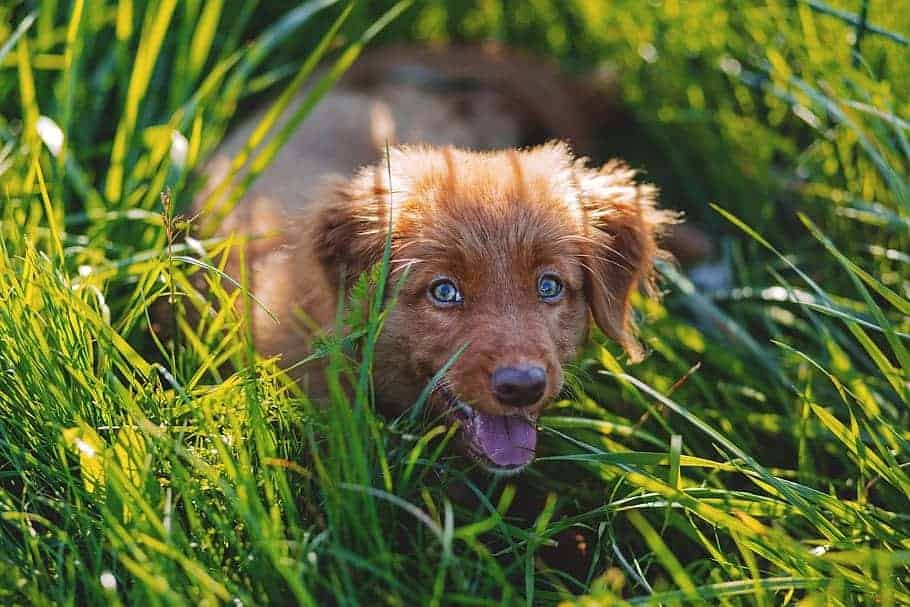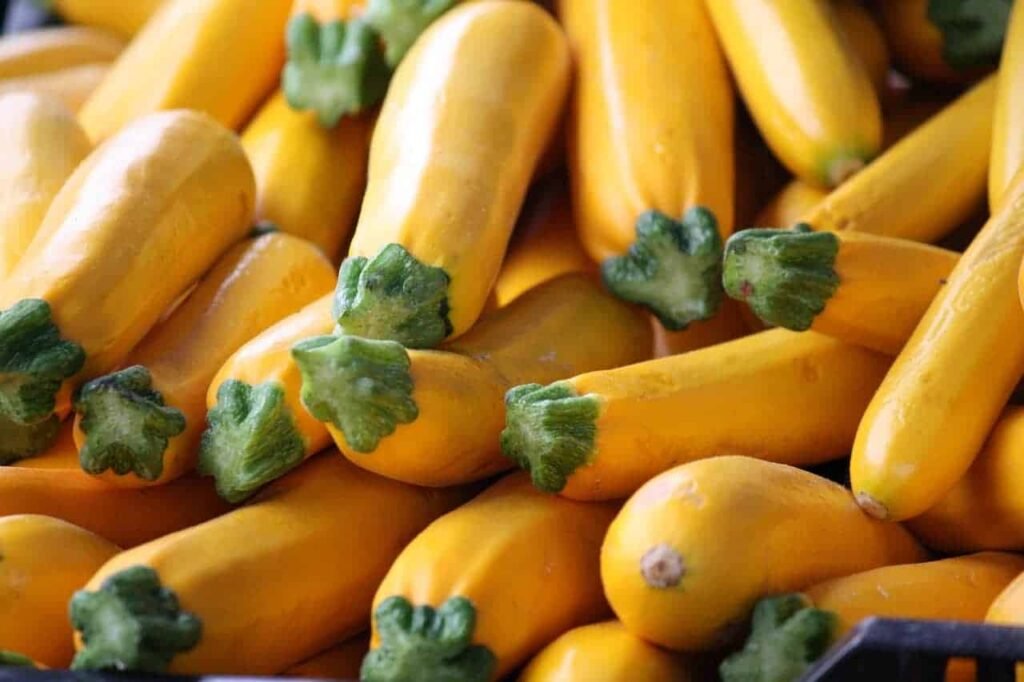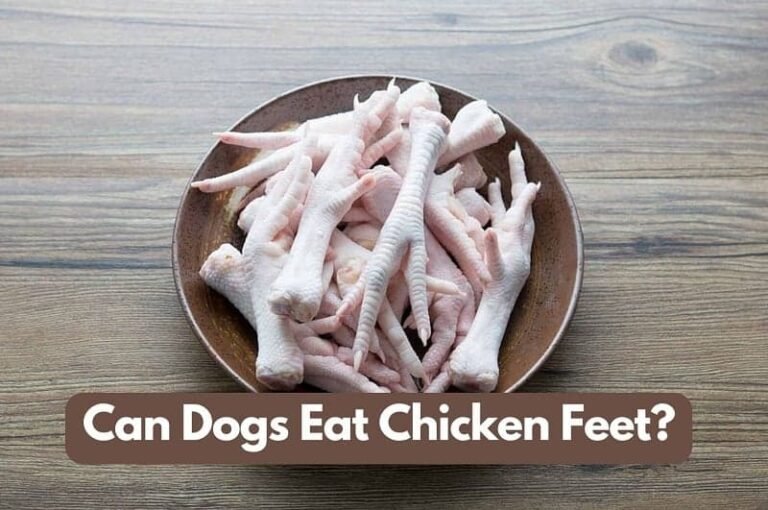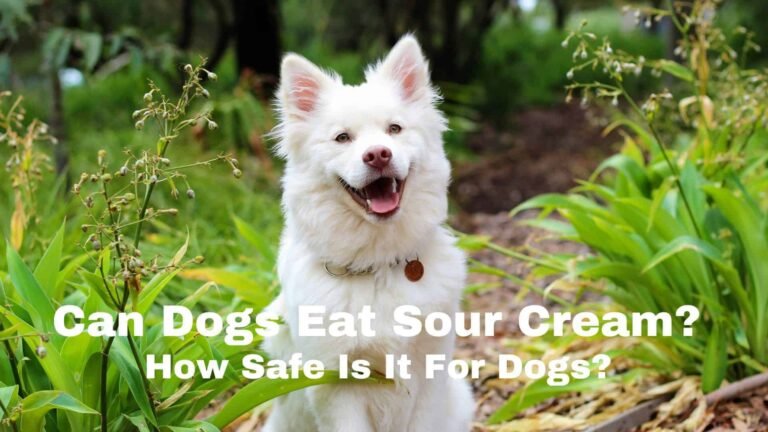Can Dogs Eat Yellow Squash? A Good Vegetable or Not?

Food helps us to stay healthy and have the energy to do work. The same thing also applies to our pets. Sometimes, when we eat our food, our pups may look at us with those puppy eyes begging us to have a bite. So, in this case, you want to find out, “Can dogs eat yellow squash? Is it safe for dogs to eat yellow squash?” You will find the answers to these questions as you read on.
A quick answer is, “Yes, dogs can eat yellow squash as it is one of the vegetables with many benefits for your pups. Adding yellow squash to your dogs’ diet will help keep them in good shape.”
However, there are other things to consider, so we will go further to explain the benefits of feeding dogs with yellow squash. Also, we will examine the potential risks and how to feed yellow squash to dogs so that they can maximize the benefits it offers.
Now, grab a cup of coffee as we dig in.
Can Dogs Eat Yellow Squash?
Yes, dogs can eat yellow squash. It is safe and can be a healthy addition to their diet. Yellow squash is low in calories and high in vitamins A, C, and B6, as well as fiber. These nutrients support your dog’s immune system, eye health, and digestion.
However, it’s essential to prepare it properly by cooking or steaming it to aid digestion and prevent choking hazards. Also, remove the seeds and skin before serving, as they can be tough for dogs to digest. Introduce yellow squash gradually and in moderation to avoid any stomach upset.
Read also: Can Dogs Eat Basil? All You Need To Know

Is Yellow Squash Good For Dogs?
Yes, yellow squash is good for dogs. It is a nutritious addition to their diet, providing vitamins A, C, and B6, as well as fiber. These nutrients support immune function, eye health, and digestion in dogs. Yellow squash is low in calories, making it a healthy snack option.
Remember its better to cook or steam it before serving dogs to aid digestion and prevent choking hazards. Also, remove the seeds and skin, as they can be difficult for dogs to digest. And, don’t forget to introduce yellow squash gradually and in moderation to avoid any digestive upset.
Is Yellow Squash Bad For Dogs?
No, yellow squash is not bad for dogs. It is safe for them to consume and can be a healthy addition to their diet. But while yellow squash is generally safe for dogs to consume, there are a few potential hazards to be aware of.
Firstly, the seeds and skin of yellow squash can be tough and difficult for dogs to digest, potentially leading to stomach discomfort or blockages in their intestines. Also, it’s important to remove the seeds and skin before serving yellow squash to your dog.
In some cases, your dogs may have individual sensitivities or allergies to certain vegetables, including yellow squash. If you notice any signs of allergic reactions such as itching, swelling, or digestive issues after feeding your dog yellow squash, it’s best to discontinue its consumption and consult with your veterinarian.
As with any new food, moderation is key. Feeding excessive amounts of yellow squash to your dog can cause digestive upset or an imbalance in their diet. Introduce it gradually and monitor your dog’s response.
Read this next: Can Dogs Eat Jackfruit? Get the Facts Here!
Nutrition Benefits of Yellow Squash to Dogs
Yellow squash is not only delicious but also offers several nutritional benefits for dogs. Here are some key nutrition facts and benefits of yellow squash for our furry friends:
- Low in Calories: Yellow squash is a low-calorie vegetable, making it a healthy option for dogs, especially those watching their weight.
- Rich in Vitamins: Yellow squash is packed with essential vitamins, including vitamin A, which promotes healthy vision and immune function. It also contains vitamin C, known for its antioxidant properties, and vitamin B6, which supports brain health.
- High in Fiber: Fiber is important for digestive health, and yellow squash provides a good amount of dietary fiber, aiding in proper digestion and preventing constipation.
- Hydration Support: Yellow squash has a high water content, contributing to hydration in dogs, especially during warmer months.
- Antioxidant Properties: The presence of antioxidants in yellow squash helps protect cells from damage caused by free radicals, promoting overall health and well-being.
Can Dogs Eat All Types of Squash?
While many types of squash are safe for dogs to consume, not all varieties are suitable. Dogs can generally eat yellow squash, zucchini, and butternut squash, which are the most common and dog-friendly options.
However, it’s important to avoid feeding dogs certain squash types like acorn squash, spaghetti squash, or pumpkin with added sugars or spices. These varieties may have tougher textures or added ingredients that can be difficult for dogs to digest or may even be harmful. Stick to the safe and recommended squash options for your furry friend’s well-being.

Different Types Of Yellow Squash Dogs Can Eat
When it comes to yellow squash, there are a few different types that dogs can enjoy. Here are some varieties of yellow squash that are safe and suitable for dogs:
- Yellow Crookneck Squash: This is one of the most common types of yellow squash. Its curved shape and vibrant yellow color make it easily recognizable. Dogs can eat yellow crookneck squash after it’s properly cooked or steamed.
- Yellow Straightneck Squash: Similar to the crookneck squash, the straightneck variety is also safe for dogs. It has a straight shape and a bright yellow skin. Remember to remove the seeds and skin before serving to your furry friend.
- Yellow Zucchini: Yellow zucchini, also known as golden zucchini, is a type of summer squash with a yellow hue. Dogs can enjoy yellow zucchini, but make sure to cook or steam it and remove any seeds or skin beforehand.
- Pattypan Squash: This unique-looking squash has a scalloped edge and comes in various shades of yellow. It’s safe for dogs to consume when cooked and prepared properly.
Can Dogs Eat Raw Summer Squash?
Yes, dogs can eat raw summer squash, but it’s recommended to cook or steam it before feeding to aid in digestion, prevent choking hazards, and ensure better nutrient absorption. Cooking summer squash also helps break down its cellular structure, making it easier for dogs to chew and digest.
Can Dogs Eat Yellow Squash Skin?
While the skin of yellow squash is not toxic, it can be difficult for dogs to digest. Hence, removing the skin helps prevent any potential choking hazards and ensures easier digestion of the yellow squash for your furry friend.
Can Dogs Eat Squash Seeds?
Dogs can eat squash seeds, but it is safe to remove them before feeding. Squash seeds are not toxic to dogs, but they may pose a choking hazard, especially for small dogs. Removing the seeds reduces the risk of choking issues and ensures a safer eating experience for your canine companion.
Can Dogs Eat Yellow Squash Leaves?
It is advisable to avoid feeding yellow squash leaves to dogs. While yellow squash leaves are not toxic, they offer minimal nutritional value and can be challenging to digest for dogs. It’s best to focus on feeding your furry friend the flesh of the yellow squash, which provides more beneficial nutrients and is easier to digest.
Can Dogs Eat Cooked Yellow Squash?
Yes, dogs can eat cooked yellow squash. Cooking the yellow squash helps break down its cellular structure, making it easier for dogs to chew and digest. Cooked yellow squash is a safe and nutritious option to incorporate into your dog’s diet, providing them with vitamins and fiber. Just be sure to avoid seasoning or adding any ingredients that may be harmful to dogs.
How To Cook And Serve Yellow Squash To Dogs
The best way to serve squash to your dog is by cooking it. Cooking yellow squash for dogs is a simple process. Here’s how to do it:
- Wash the yellow squash thoroughly to remove any dirt or debris.
- Remove the skin and seeds from the yellow squash as they can be challenging for dogs to digest.
- Cut the yellow squash into small, bite-sized pieces.
- You can cook the yellow squash by steaming, boiling, or baking it. Avoid using oils, seasonings, or additives that may harm your dogs.
- Cook the yellow squash until tender but not overly mushy.
- Allow the cooked yellow squash to cool before serving it to your dog.
- Serve the cooked yellow squash as a standalone treat or mix it with your dog’s regular food for added nutrition.
Alternative Treats To Squash For Dogs
If you’re looking for alternative treats to squash for your dog, there are several options that are safe and enjoyable for them. Here are a few alternatives:
- Carrots: Dogs often love the crunchiness and natural sweetness of carrots, which are low in calories and high in vitamins.
- Apples: Remove the seeds and core, then slice or chop apples into small pieces. They provide dogs with fiber and vitamins, but avoid giving them the seeds or stems.
- Blueberries: These bite-sized fruits are packed with antioxidants and make for a tasty and healthy treat for dogs.
- Sweet Potatoes: Cooked and cubed sweet potatoes offer a nutritious and flavorful option. They are a good source of dietary fiber, vitamins, and minerals.
- Green Beans: Fresh or lightly steamed green beans can be a satisfying low-calorie treat for dogs, providing them with fiber and essential nutrients.
FAQs about Dogs Eating Yellow Squash:
Is yellow squash safe for dogs with sensitive stomachs?
Yes, yellow squash is generally safe for dogs with sensitive stomachs. However, it’s recommended to introduce it gradually and monitor their response to ensure it agrees with their digestive system.
Can yellow squash cause allergies in dogs?
While allergies to yellow squash are rare in dogs, individual sensitivities can occur. If you notice any signs of allergic reactions, such as itching or gastrointestinal issues, discontinue feeding yellow squash and consult with your veterinarian.
How much yellow squash can I feed my dog?
The amount of yellow squash to feed your dog depends on their size, age, and overall diet. It’s best to consult with your veterinarian to determine the appropriate portion sizes for your specific dog.
Can puppies eat yellow squash?
Yes, puppies can eat yellow squash, but it should be introduced gradually and in small portions to avoid any digestive issues. Consult your veterinarian for specific guidance.
Can diabetic dogs eat yellow squash?
Yellow squash is considered a low glycemic index food and can be suitable for diabetic dogs. However, it’s crucial to consult with your veterinarian to ensure it aligns with your dog’s individual dietary requirements.
Can dogs with pancreatitis eat yellow squash?
Yellow squash is generally considered safe for dogs with pancreatitis, but it’s best to consult with your veterinarian for specific dietary recommendations based on your dog’s condition.
Is it necessary to peel yellow squash for dogs?
Yes, it’s recommended to remove the skin of yellow squash before feeding it to dogs. The skin can be tough and difficult to digest.
Can dogs eat frozen yellow squash?
Yes, dogs can eat frozen yellow squash, but it’s important to thaw and cook it before serving. Raw frozen squash may be challenging for dogs to chew and digest.
Can dogs eat canned yellow squash?
Canned yellow squash may contain added preservatives or seasonings that can be harmful to dogs. It’s best to feed fresh or properly cooked yellow squash to ensure its safety and nutritional value.
Conclusion
So, can dogs eat yellow squash? The answer is a resounding yes! Yellow squash can be a nutritious addition to your dog’s diet when prepared and served properly. However, it’s crucial to remember that every dog is unique, and what works for one may not work for another. As responsible pet owners, it’s our duty to observe our furry friends, monitor their reactions, and consult with veterinarians when in doubt.
In the end, it’s not just about what our dogs can eat, but about providing a balanced and varied diet that meets their individual needs. Yellow squash can be a part of that wholesome diet, offering vitamins, fiber, and hydration.
So go ahead, share a cooked slice with your pup and savor those precious moments together. After all, a happy and healthy dog is what truly matters, and feeding them well is just one way we show our love and care.
Read Other Dog Food Resources
- Can Dogs Eat Rawhide Chews? Is Rawhide Chews Bad For Dogs?
- Can Dogs Eat Fig Newtons? Pure Facts You Need To Know
- Can Dogs Eat Salami? All You Need To Know
- Can Dogs Eat Quail Eggs?
- Can Dogs Eat Salt And Pepper?
References:
- Amerinca Kennel Club – Can Dogs Eat Squash?
- Raw Bistro – Can Dogs Eat Squash? Benefits of Squash for Dogs
- Rover – Can Dogs Eat Squash?





